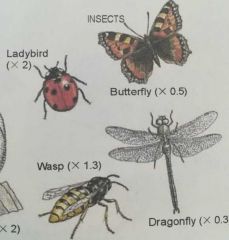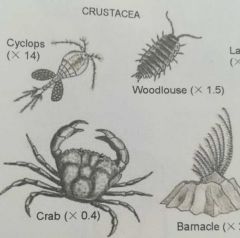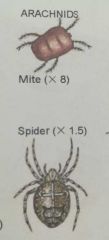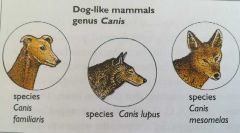![]()
![]()
![]()
Use LEFT and RIGHT arrow keys to navigate between flashcards;
Use UP and DOWN arrow keys to flip the card;
H to show hint;
A reads text to speech;
41 Cards in this Set
- Front
- Back
- 3rd side (hint)
|
Movement |
- an action by an organism or part of an organism causing a change of position or place - most single-celled organisms move as a whole fungi and plants may make movements with parts of their bodies. |
|
|
|
Respiration |
- the chemical reactions in cells that break down nutrient molecules and release energy for metabolism |
|
|
|
Sensitivity |
- the ability to detect or sense stimuli in the internal or external environment and to make appropriate responses |
|
|
|
Growth |
A permanent increase in size and dry mass by an increase in cell number cell size or both |
|
|
|
Reproduction |
The processes that make more of the same kind of organism |
|
|
|
Excretion |
Removal from organisms of the waste products of metabolism, toxic materials and substances in excess of requirements |
|
|
|
Nutrition |
Taking in of materials for energy, growth and development |
|
|
|
What is morphology? |
1. The study of the form or outward appearance of organisms.
2. The overall form and shape of plants animals and microorganisms, such as whether they have wings or legs. |
|
|
|
What is anatomy? |
The detailed body structure, which could be determined by dissection. |
|
|
|
Characteristics of an animal |
- multicellular - cells have a nucleus but no cell walls or chloroplasts - feed on organic substances made by other living organisms |
|
|
|
Characteristics of a plant |
- multicellular - cells have a nucleus, cell walls made of cellulose and often contain chloroplasts - feed by photosynthesis - may have roots, stems and leaves |
|
|
|
Characteristics of a fungi |
- usually multicellular - have nuclei - have cell walls not made of cellulose - feed by saprophytic or parasitic nutrition |
|
|
|
Characteristics of a Protactista |
- multicellular or unicellular - cells have a nucleus - cells may or may not have a cell walk and chloroplasts - some feed by photosynthesis and others feed on organic substances made by another organism |
|
|
|
Characteristics of a prokaryote |
- often unicellular - have no nucleus - have cell walls, not made of cellulose - have no mitochondria |
|
|
|
Viruses |
- causes things such as colds influenza and AIDS - "weird life" - on their own they cannot move, feed, excrete, show sensitivity, grow or reproduce - in an organism |
|
|
|
Fish |
- vertebrates with scaly skin - have gills - have fins |

|
|
|
Amphibians |
- vertebrates with moist scale-less skin - egg laid in water, larva lives in water - adult often lives on land - larva has gills adult has lungs |

|
|
|
Birds |
- vertebrates with feathers - forelimbs have wings - lay eggs with hard shells - endothermic - have a beak - heart has four chambers |

|
|
|
Reptiles |
- vertebrates with scaly skin - lay eggs with rubbery shells |

|
|
|
Mammals |
- vertebrates with hair - have a placenta - young feed on milk from mammary glands - endothermic - have a diaphragm - heart has four chambers - have different types of teeth |

|
|
|
Phylum arthropods |
- no backbone - hard, waterproof exoskeleton - several pairs of jointed legs - segmented bodies |

|
|
|
Insects |
-mostly live on land - arthropods with three pairs of jointed legs - one pair of antennae - compound eyes - typically, two pairs of wings ( one or both may be vestigial) - breath through tracheae - body divided into head, thorax and abdomen - no limbs on the abdominal segments |

|
|
|
Crustaceans |
- mostly live in water - arthropods with more than three pairs of jointed legs - have to pairs of antennae which are sensitive to touch and chemicals - they have compound eyes - breath through gills |

|
|
|
Arachnids |
- bodies are divided into two regions the cephalothorax and the abdomen. - four pairs of segmented limbs on the cephalothorax -usually several pairs of simple eyes - breath through gills called book lungs |

|
|
|
Myriapods |
- body consists of a head and segmented body segments. - each segment has jointed legs - one pair of antennae - simple eyes |

|
|
|
Why is it important to classify organisms? |
- classification is a way of sorting organisms into a meaningful order, traditionally using morphology and anotomy more recently using DNA |
|
|
|
What is the binomial system? |
- The binomial system is an internationally agreed system in which the scientific name of an organism is made up of two parts showing genus and species. |
|
|
|
Species or genus first? |

Ex. ^ - Genus then species |
|
|
|
Define species? |
- A group of organisms that can reproduce to produce fertile offspring. - often resemble each other in appearance. |
|
|
|
How do DNA base sequences help with classification? |
- each species has a distinct number chromosomes and a unique sequence of bases In it's DNA making it identifiable and distinguishable from other species.
- it helps particularly when different species are very similar morphologically and anatomically. |
|
|
|
What are vertebrates? |
- organisms with a spinal or vertebral column and a skull |
|
|
|
Poikilothermic |
- variable temperature |
|
|
|
Homoiothermic |
- constant temperature |
|
|
|
What groups are in the Whittaker five-kindom system? |

|
|
|
|
What groups are In Whoese's 3 domain system? |

|
|
|
|
Ferns |
-plants with roots, stems & leaves -have leaves called fronds -do not produce flowers -reproduce by spores |
|
|
|
Flowering plants |
-Plants with roots stems and leaves -reproduce sexually by means of flowers and seeds -seeds are produced inside the ovary of the flower |
|
|
|
Monocotyledons |
Leaf shape - long and narrow Leaf veins- parallel Cotyledons- one Grouping of flower parts - threes |
|
|
|
Dicotyledon |
Leaf shape - broad Leaf veins - branching Cotyledons - two Grouping of flower parts - fives |
|
|
|
Dichotomous keys uses |
- used to identify unfamiliar organisms - simplfies the process of identification |
|
|
|
How a dichotomous key is constructed. |
- each key is made up of pairs of contrasting features -starting with quite general characteristics and progressing to more specific ones. |
|

